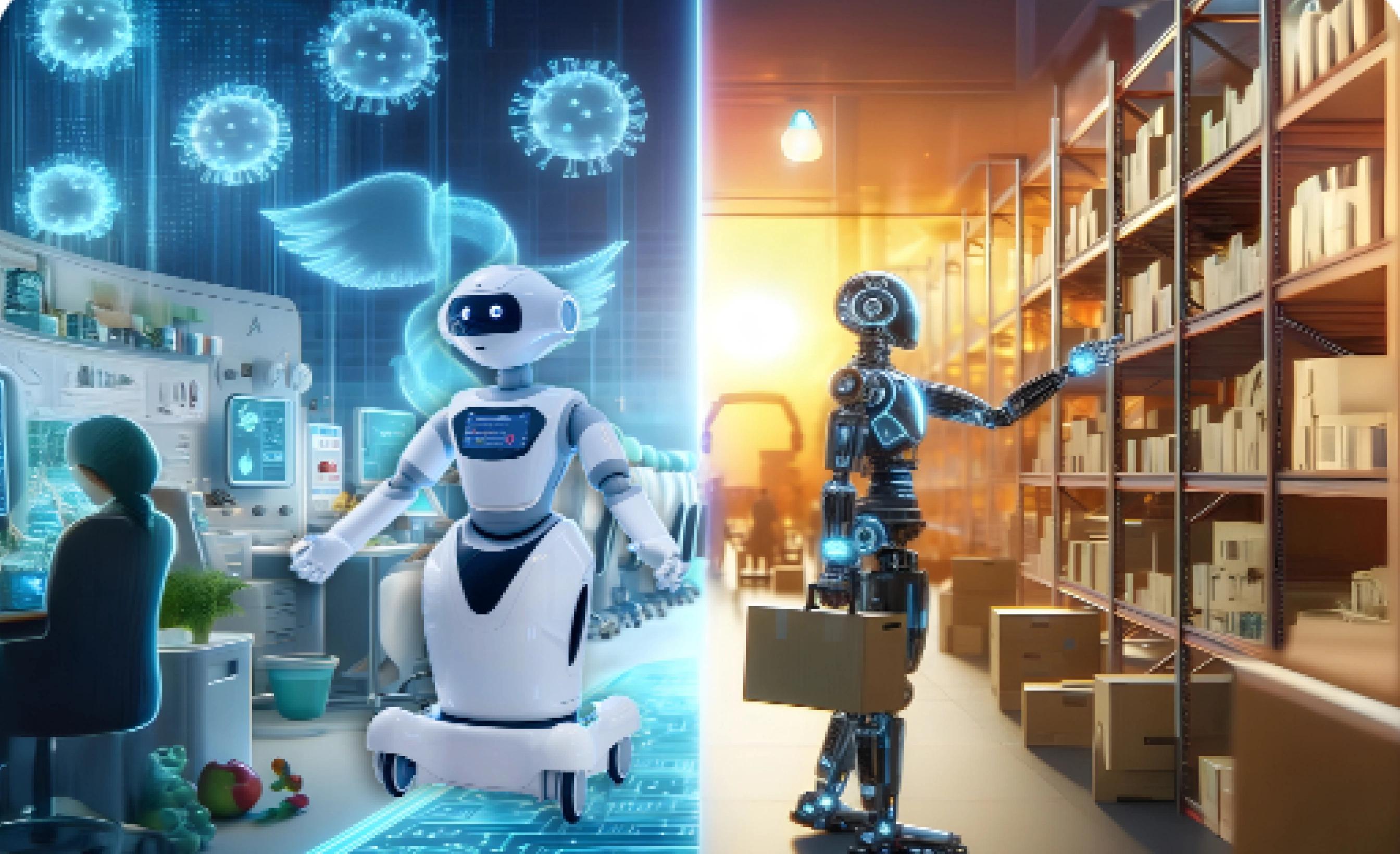70% of Your IT Budget Is Wasted on Legacy
Legacy systems drain your spend, slow your teams, and stall innovation. Modernize with speed, security and confidence — guided by our experts.
AI often feels like a buzzword that’s not quite buzzing. The problem isn’t with AI itself but with how we’re deploying it. Simply put – AI isn’t failing; we’re failing AI. The short-term hurdles we are encountering come from unrealistic implementation strategies and a lack of AI literacy across organizations. Companies are trying to sprint before they can even crawl in the AI race. To unlock AI’s potential, we need to take baby steps.
What We Think AI Is – Expectations vs Reality
The excitement around AI has led to companies setting sky-high expectations without the foundational understanding needed to meet them. It’s like trying to make Elon Musk laugh at a dad joke – ambitious but often unsuccessful. So, we need to set achievable performance metrics and focus on human-AI collaboration. Robust AI training programs and phased implementation strategies are essential.
Think of AI implementation as building a house; you can’t start with the roof. When companies dive headfirst into AI projects, they often overlook the importance of setting realistic, short-term goals. Let me tell you, they aim for the moon and get disappointed when they land among the stars. The key to successful AI deployment is to start small and scale up. Implement pilot projects that can demonstrate immediate value and provide learning opportunities. These small victories build confidence and lay the groundwork for larger, more ambitious projects.
Building a Symbiotic Human-AI Relationship for a Smarter Tomorrow
Furthermore, focusing on human-AI collaboration rather than AI in isolation is crucial. AI is here to augment our capabilities, not replace us. By setting realistic, short-term goals and gradually scaling up, organizations can achieve tangible success. Building a symbiotic relationship with AI leads to better decision-making and innovative solutions.
The notion that AI will replace mere mortals is a common misconception, although that’s what Silicon Valley tech bros say all the time. It’s like thinking your morning coffee will brew itself – nice in theory, but someone still has to push the button. In reality, AI’s true potential lies in its ability to work alongside humans, enhancing our strengths and compensating for our weaknesses. For instance, AI can crunch vast chunks of data at lightning speed, providing insights that would take humans much longer to uncover. However, it still requires human intuition and expertise to interpret these insights and make informed decisions.
Why We Need Custom AI Solutions
Chasing the dream of general-purpose AI is quite like hunting for unicorns – it sounds great but isn’t practical. Focusing on custom AI solutions tailored to business needs can lead to immediate and tangible success. AI consulting services that tailor solutions to specific business needs empower organizations to achieve more targeted development, seamless integration, and clearly defined ROI metrics. By aligning AI initiatives with strategic goals, companies can secure quicker wins, showcase tangible value, and build a strong foundation for scalable, long-term AI success.
General-purpose AI, the kind that can perform any intellectual task a human can, remains a distant dream. The technology we have today excels in specific, well-defined tasks. By focusing on specific-purpose AI, businesses can address their immediate needs more effectively. For example, a retail company might use AI to optimize inventory management, while a healthcare provider could employ AI to improve diagnostic accuracy. These targeted applications are more likely to yield quick wins and demonstrate tangible value to stakeholders. If you still think general-purpose AI is the best way to go, then be my guest. But good luck!

AI Is Not a Threat, It’s an Opportunity
The notion that AI will replace jobs is about as accurate as predicting flying cars by 2020 was. While AI will automate certain tasks, it’s also creating new roles and enhancing existing ones. The future of work is not about choosing between AI or humans; it’s about collaboration.
Embrace AI as a tool for innovation, and you’ll find yourself thriving in this new era. The future isn’t AI or human; it’s AI and human.
The real question isn’t “Can jobs be replaced by AI?” but “How can we harness AI to transform the way we work and live?” Presently, let’s focus on building a symbiotic relationship with AI and who knows, maybe one day those tech bros will finally figure out how to make a decent cup of coffee with their AI singularity after all. Until then, I’ll stick to my trusty coffee maker, thank you very much.
Have You Heard of AI Literacy?
A fundamental shift towards building AI literacy across all levels of your organization is needed. Training programs that demystify AI and set achievable KPIs are crucial. Think of it as giving AI a pair of training wheels before expecting it to compete in the Tour de France.
AI literacy isn’t just for IT departments; it’s essential for everyone in the organization. Executives need to understand AI to make informed strategic decisions, while frontline employees must know how to use AI tools effectively. Comprehensive training programs can bridge this knowledge gap. After all, expecting your team to use AI without in-depth training is like handing a teenager the car keys and saying, “Figure it out!” – it’s not going to end well. These programs should, in fact, cover the basics of AI, its potential applications, and its limitations. By fostering a culture of AI literacy, you can ensure that their AI initiatives are grounded in reality and poised for success.

A phased implementation strategy is a game changer. You may start with pilot projects that can show immediate impact, then scale up based on feedback and results. This approach minimizes risks and maximizes learning. It’s about setting the stage for long-term success by building on short-term wins.
The “crawl, walk, run” approach is an effective way to deploy AI. Begin with small-scale projects that address specific pain points. These pilot projects should be designed to deliver quick wins and generate valuable insights. Once these initial projects prove successful, organizations can gradually expand their AI initiatives, scaling up based on what they’ve learned. This iterative process allows for continuous improvement and reduces the risk of large-scale failures.
Improving Outcomes By Leaps and Bounds
Let’s take Wawa, the beloved convenience store chain, as a prime example. They faced significant challenges in managing food waste and inventory due to the short expiry dates of their fresh items. Relying on past data and employee guesstimations led to high spoilage and overproduction. It was a classic case of “too much of a good thing” – except here, it was costing them big time and contributing to increased carbon emissions.
They conducted a 28-day pilot implementing their brand new AI-powered Real-time Inventory Monitoring System which used advanced AI and computer vision technologies to monitor inventory levels real-time. In other words, imagine a super-intelligent fridge that not only tells you when you’re out of milk but also predicts when you’re likely to run out based on your cereal consumption habits.
During the pilot, Wawa saw a 76% reduction in food spoilage, improved inventory management, and a cut in carbon emissions by 483 kg per store – that’s like saving 276 trees! Sales increased by 2% thanks to better inventory and recommendations. Now we all can take a page from their playbook.
It’s no secret that AI’s potential is vast, but we need to temper our enthusiasm with realism. By setting realistic expectations, fostering collaboration, and focusing on specific-purpose AI with a pragmatic deployment strategy we can ensure that AI not only meets but exceeds our business goals. It’s not about making AI do everything but making it do the right things effectively.


